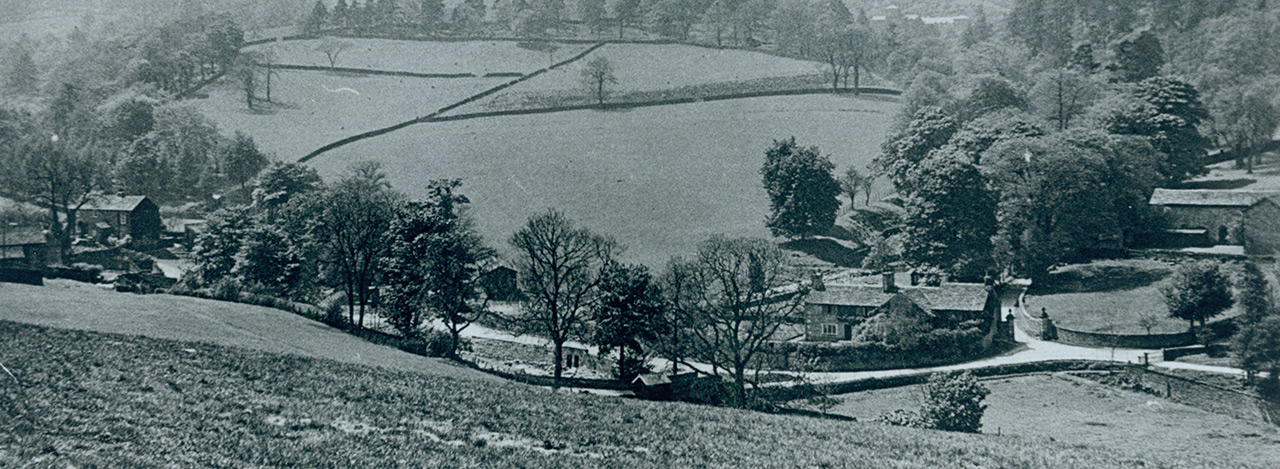
The drowned hamlet of Goyt’s Bridge
Before the Grimshawes arrived in this upper part of the valley, Goyt’s Bridge was little more than a handful of farm buildings sitting beside an ancient packhorse bridge. With the building of Errwood Hall, a new order had arrived. But it would only last for a single century – from the 1830s to the 1930s.
In 1930, following the death of Mary, the last of the Grimshawe family, Stockport District Council purchased the entire estate. They had identified the valley as the perfect site for two reservoirs which would provide water to Stockport and surrounding towns.
Although Errwood Reservoir wouldn’t be completed for another 30 years, Errwood Hall and some 20 farms and cottages were demolished by 1935. It’s said that the planners feared their drains could pollute the reservoirs.
I’ve plotted the main points of interest within Goyt’s Bridge on the map. And included as much information as I know (which in some cases isn’t a lot) on other pages. Click any live link to view the pages.
Unique cine film
Click here to view a grainy, black and white silent cine film taken at Goyt’s Bridge in 1932. And click here to view a video bringing to life the history of both Goyt’s Bridge and Errwood Hall.
![]()
The building at far left is Goytsbridge Farm, with Goytshead Farm opposite. The packhorse bridge is hidden in the dip beside the farmhouses.
Shooters’ Clough (the stream which today runs alongside the path up to the hall ruins) flows into the River Goyt through the twin-arched bridge beside the road in the centre foreground. The Goyt is just out of sight, running past this bridge, from left to right, along the valley floor.
Any further information and photos would be much appreciated (all would be acknowledged, and nothing used without prior permission). Please click here to get in touch.
